IoT based machine monitoring system
The components of an IoT based machine monitoring system are these: Cyber physical system, IoT and Cloud computing.
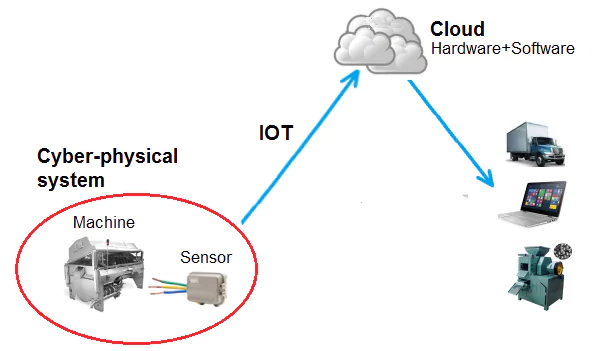
Cyber-physical system (CPS): Basically, a machine that is controlled or monitored by a computer that is directly connected to the internet. Cyber means ‘involving, using or relating to computers’ (as in cyber-space or cybercafe). The machine can be anything at all – for metal forming, metal cutting, making textiles, pharma, food processing, etc. The computer is usually an embedded system, a small computer with the dedicated function of monitoring or controlling the particular machine. This is called the Sensor in the machine monitoring system. It has inputs and outputs that are connected to the electronics on the machine, and the ability to communicate (i.e., send and receive data) with the internet.
IoT: IoT is short for Internet of Things. The internet (a global network of computers that talk to each other) over the past 30-odd years has traditionally been used by humans to communicate with each other or to get information. This is the IoP – Internet of People, used for sending emails, browsing the web, communicating on social media, etc. Over the past few years, however, things (devices and machines) have started using the internet. Things like cars, machines, sensors, actuators, devices in buildings, etc. E.g., as you are going home, when you are a certain distance away, software on your phone (based on your GPS coordinates) can switch on the air conditioners and coffee making machine in your home, all communication happening over the internet – a group of things talking over the internet and performing actions.
IoT in Manufacturing is also called IIOT – Industrial Internet of Things. It is an integral part of a machine monitoring system. The sensor sends data to the Cloud over the internet, through the mobile phone network or through a broadband connection. There is software on the cloud that analyzes and stores the data. The data is then used in a variety of ways: sent to people in the organization for information or action; used to control the machine or other machines; sent to scheduling software; sent ERP software for further action like material ordering, logistics, etc.
The Cloud in a machine monitoring system: The cloud is a network of remote servers hosted on the internet to store, manage, and process data, rather than a local server or a personal computer. An example is your bank account, that is a set of data on a cloud server. You have no idea where the server is, and neither does your bank manager. A software application on the server enables you to login to your account and perform various banking functions, and there is a large database where your account data is stored along with thousands of other accounts holders’ accounts.
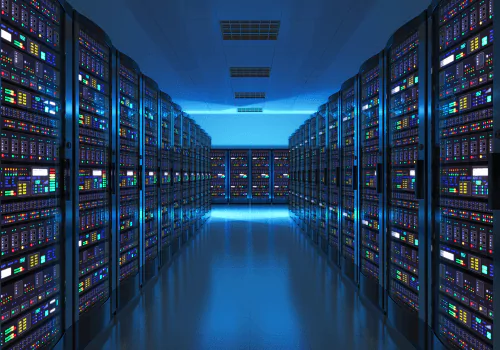
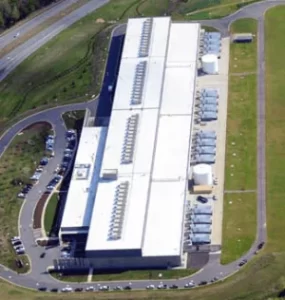
Your server is not sitting alone somewhere, feeling cold and lonely. It is part of a huge collection of hundreds or thousands of servers in a server farm, in a huge building called a data center. This has strict security, 24/7 power supply, air conditioning (so yes, your server IS feeling cold although not lonely), and very high speed internet, all working 24/7, with very high reliability. Your data is backed up periodically, automatically. Your data is also on multiple mirror servers at multiple locations in the world. If one server fails, another one automatically takes over the job. All of this work – backing up your data, allocation of storage space as your needs change, the mirroring – is happening automatically, without any intervention from you, saving you an enormous amount of work that you would otherwise have to do if you have a local server sitting in your premises.
So, in sum, this is how the various components in an IoT based machine monitoring system work together: The sensor gets data from the machine, sends this data to a cloud server over the internet (IoT). Software on the cloud takes this data, analyzes it, and does one or more of these:
– Displays something to humans
– Does something itself (e..g, automatically reorder raw material based on consumption)
– Tells the machine to do something (e.g., stop, speed up or slow down)
– Tells some other machine to do something
That’s it. Simple. Any IoT based machine monitoring system has these 3 components working together.
Etc
My 100 km bike ride, and my (temporarily) destroyed self-esteem
I recently cycled 100 km. between a couple of towns in North Karnataka. Beautiful terrain, lovely weather, sparse traffic, plentiful Oxygen. The only problem was that I stopped appreciating all these after about 50 km. This is what happened: I started off around 8 AM thinking I’d have breakfast at some interesting place on the way. After 20 km I still wasn’t feeling hungry, so I just had a couple of bananas.
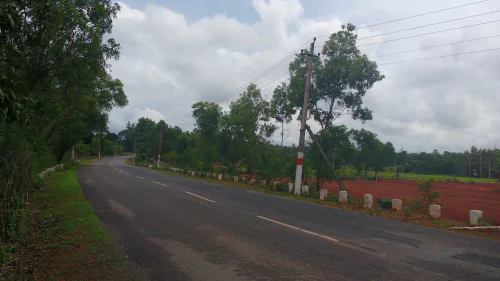
The road was great, but went up and down a whole lot of hills. Every up-slope of course was balanced out by a down-slope, and theoretically, the energy that I spent on the ups was being balanced out when I coasted on the downs. Turns out that this is not how your muscles work. My leg muscles were aching like crazy by the time I was done with an up slope, and weren’t happy with the rest they got on the way down. On the next up, instead of saying “All right, we can do this, we’re all fresh from the rest”, they said “What, again ? What does this idiot think we are, some machines ?”. After 40 km the going got really tough, and my legs were really complaining. On some steep slopes I actually got off and walked, wondering if I could even finish the 100 km or would have to hop on to a passing truck with the bike.

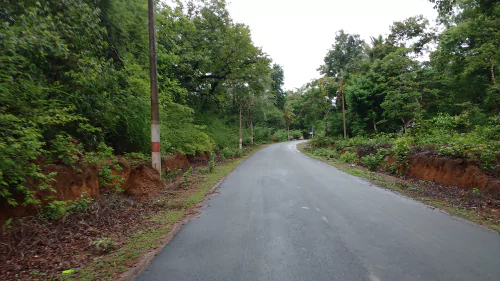
I finally had lunch in a town at the 60 km mark, and got going again after a short rest. The road thankfully flattened out after this, and the hills and forests around me were replaced by paddy fields. The legs however still remembered the morning’s punishment and were only half happy. Hitting my destination at 4 PM was the ultimate joy, but I was quite disgusted with myself by then, thinking that people ride 3500 km in the Tour de France race, and here I was struggling to do 100 km.
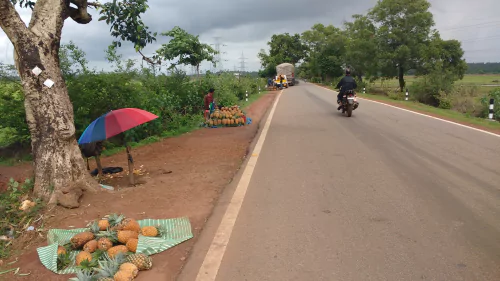
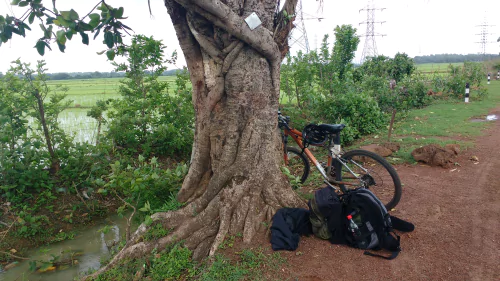

After I got back home to Bangalore, I took a few deep breaths of Carbon Monoxide and got on to the www to see what I’d done wrong. I saw a whole lot of articles titled ‘How to prepare for your first 100 km ride’, and thought “What, you actually have to prepare for your first 100 km ride?”. It turns out that people actually train a few weeks before doing this, they eat a substantial breakfast before setting off, and carry stuff like energy bars to munch on the way. So I’d done EVERYTHING wrong. After this my self-esteem went up a bit, and I concluded that the problem was with my brain, not my legs. Eating nothng in the morning, 2 bananas after 20 km and lunch after 60 km – what the hell was I thinking ?
I also got another horrifying thought: What if my problem was the air that I was breathing ? What if my body, after living for so long in a city, has gotten unused to breathing Oxygen and can only live on a cocktail of Carbon Monoxide + SO2 + NOx ? Like the Nitrogen fixing bacteria in soil, that breathe Nitrogen. Maybe on my next ride I’ll try taking along a canister of pressurized city air cocktail.


